Youth violence 'spiraling out of control' as juvenile homicide rate doubles in a decade: Data
The Manhattan Institute fellow Hannah E. Meyers sits down with Fox News' Carley Shimkus to discuss an alarming uptick in child gun violence.
New research on U.S. homicide trends released Tuesday reveals teenagers between the ages of 15 and 19 were three times more likely to be killed in 2020 and 2021 than they were in 1960.
Homicide victimization across all age groups has risen since the 1960s, and people between the ages of 20 and 25 are still the most likely to be killed, according to an analysis of homicide data over the last 50 years from the Council on Criminal Justice (CCJ).
Homicide victimization by age
"The group that stands out to me, personally, is the older group, age 35 to 44," Ernesto Lopez, who authored the CCJ report released Tuesday, told Fox News Digital. "…Those older groups saw rates that are at their 1980s, 1990s peak homicide years. Those rates got really close to those peaks, while the younger age groups… are still below those peaks of the '80s and '90s."
Homicide rates for teenagers peaked in the early to mid-1990s, but are still much higher now than they were in 1960, according to the study. Lopez said he was "not familiar with any sort of research right now that looks at what's contributing to that younger age group."
CCJ analyzed homicide data from 30 major U.S. cities, as well as data from federal agencies, including the FBI, the Centers for Disease Control and Prevention (CDC) and the Disaster Center.
MURDERS RISE 16% IN 2021 ACROSS MAJOR US CITIES
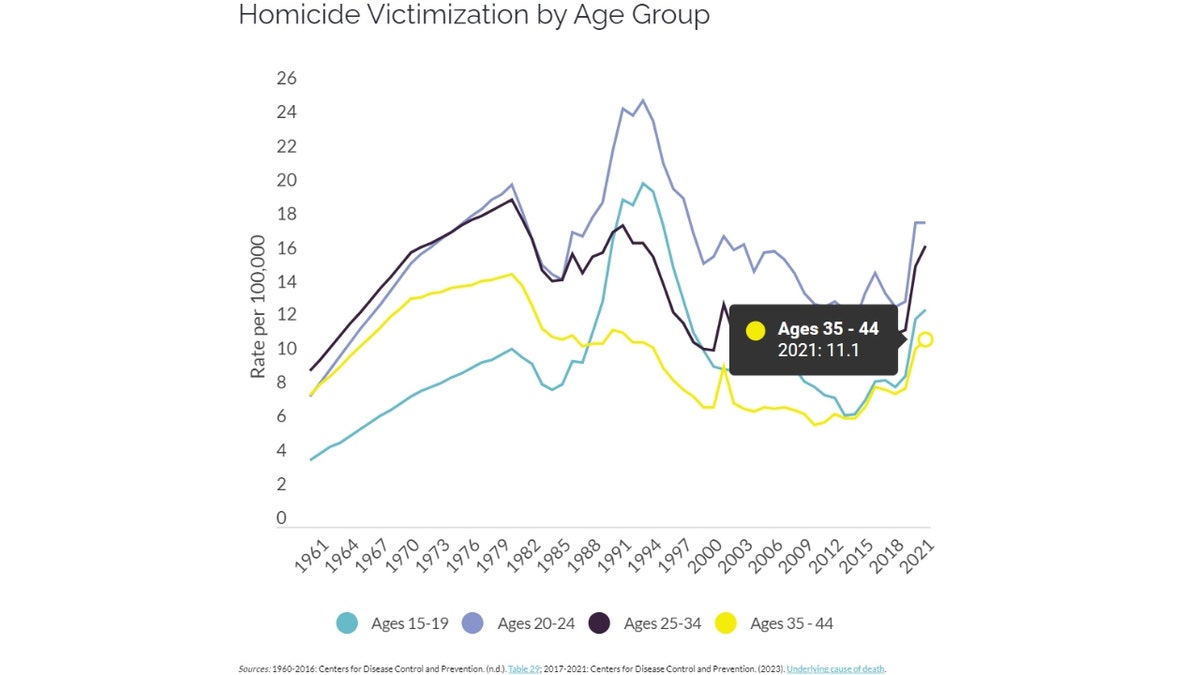
A graph from the Council on Criminal Justice shows how different age groups are victimized by homicide. (CCJ)
In the first half of 2023, there was a 9.4% decrease in homicides across the 30 cities CCJ studied compared to the first half of 2022.
Violent crime in 2023 compared to 2022
The report notes that if the trend continues throughout the remainder of 2023, the country will have seen "one of the largest single-year homicide reductions in the era of modern record keeping." However, homicides are still up about 24% compared to 2019.
SEATTLE HOMICIDES POISED TO TOP 3-DECADE HIGH AMONG NATIONWIDE CRIME SPIKE
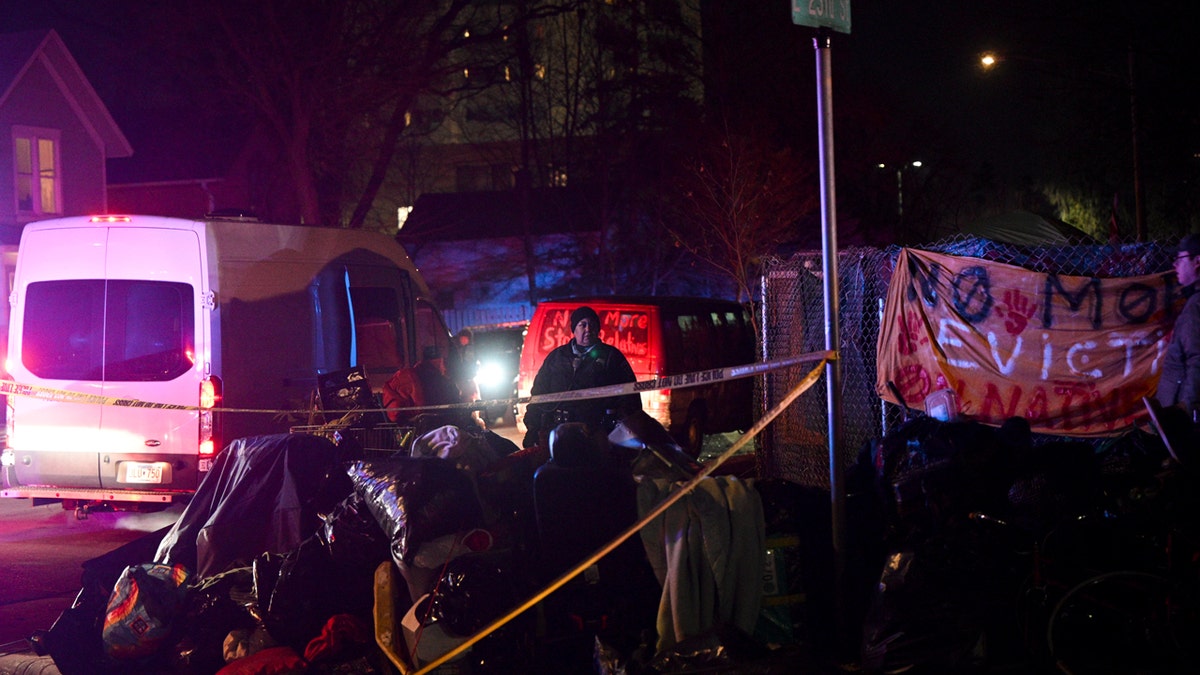
Police respond to a report of a homicide near the Nenookaasi homeless encampment in Minneapolis, Dec. 12, 2023. (Aaron Lavinsky/Star Tribune via AP)
"Violent crimes remain elevated compared to 2019, the year prior to the COVID pandemic and racial justice protests of 2020."
"There were 24% more homicides during the first half of 2023 than during the first half of 2019 in the study cities. Property crime trends have been more mixed. There were fewer residential burglaries and larcenies and more nonresidential burglaries in the first half of 2023 than during the same period four years earlier. Motor vehicle thefts more than doubled (+104%), while drug offenses fell by 39%."
NATION'S CAPITAL RECORDS MOST HOMICIDES IN 2 DECADES: ‘A BRAZEN RETURN TO LAWLESSNESS’
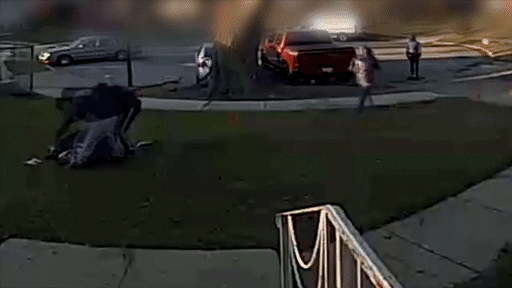
A Maryland woman suffered two broken bones after four suspects were caught on camera assaulting her while attempting to steal her car in Prince George's County. (Prince Georges County Police Department)
Two of the driving factors behind the significant increase in motor vehicle thefts this year were a correlation between car thefts and other rising violent crime, as well as an increase in TikTok videos about car theft, according to Lopez.
BLM SILENT WHEN CONFRONTED WITH DATA SHOWING MASSIVE 2020 SPIKE IN BLACK MURDER VICTIMS
While the number of arrests involving Black adults for homicides dropped 65% between 1980 and 2020, Black people were six times more likely to be arrested for homicides in 2020 than White people, and Black people were also more likely to be homicide victims in 2020.
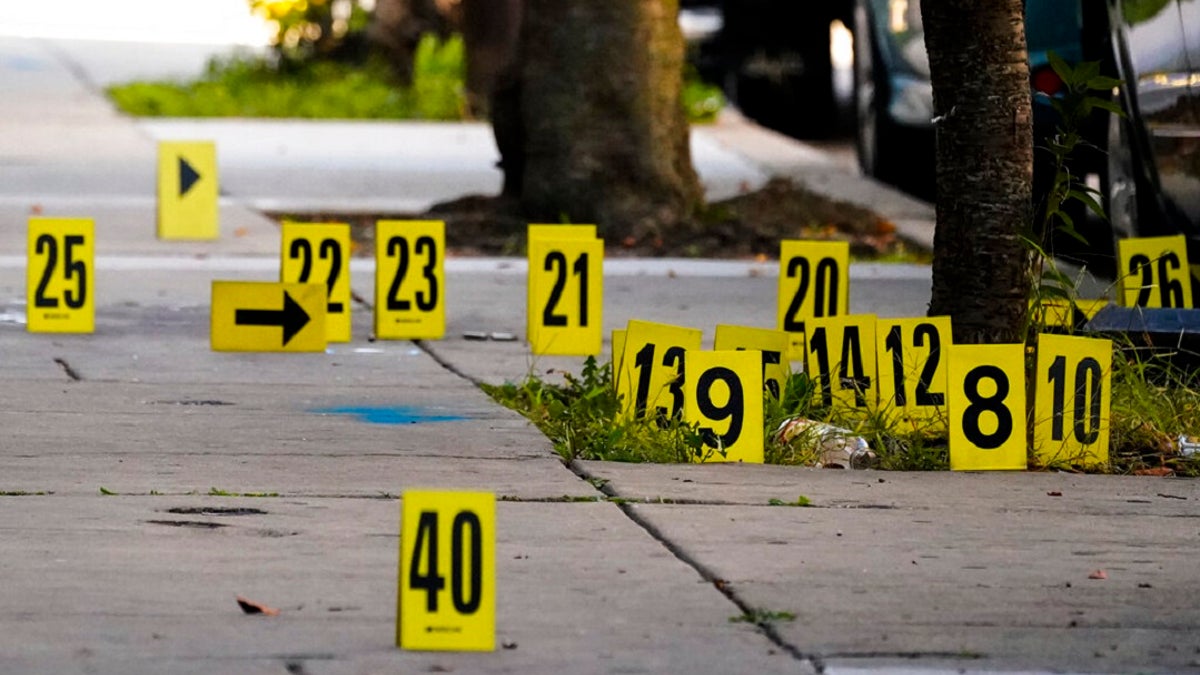
Evidence markers are shown at the scene where people were shot, including police officers, in Philadelphia, Oct. 12, 2022. (Matt Rourke/AP)
Black males were eight times more likely than White males to die by homicide, and Black females were four times more likely than White females to die by homicide.
Driving factors behind violence
The CCJ report notes one potential cause behind an increase in violent crime, including homicides, starting in 2020 called "routine activity theory."
SOROS-BACKED DA SLAMMED AFTER HOMELESS MAN RELEASED ON VIOLENT OFFENSE CHARGED WITH MURDER
"Routine activity theory argues that crime stems from the combination of a motivated offender, a suitable target, and the absence of capable guardians. Early in the pandemic, in addition to dealing with the same economic stresses and anxieties that affected the entire population, young men in high-crime neighborhoods – many of whom had experienced high levels of trauma – were also forced to remain in close proximity to people with whom they had serious and unresolved disputes," the report states.
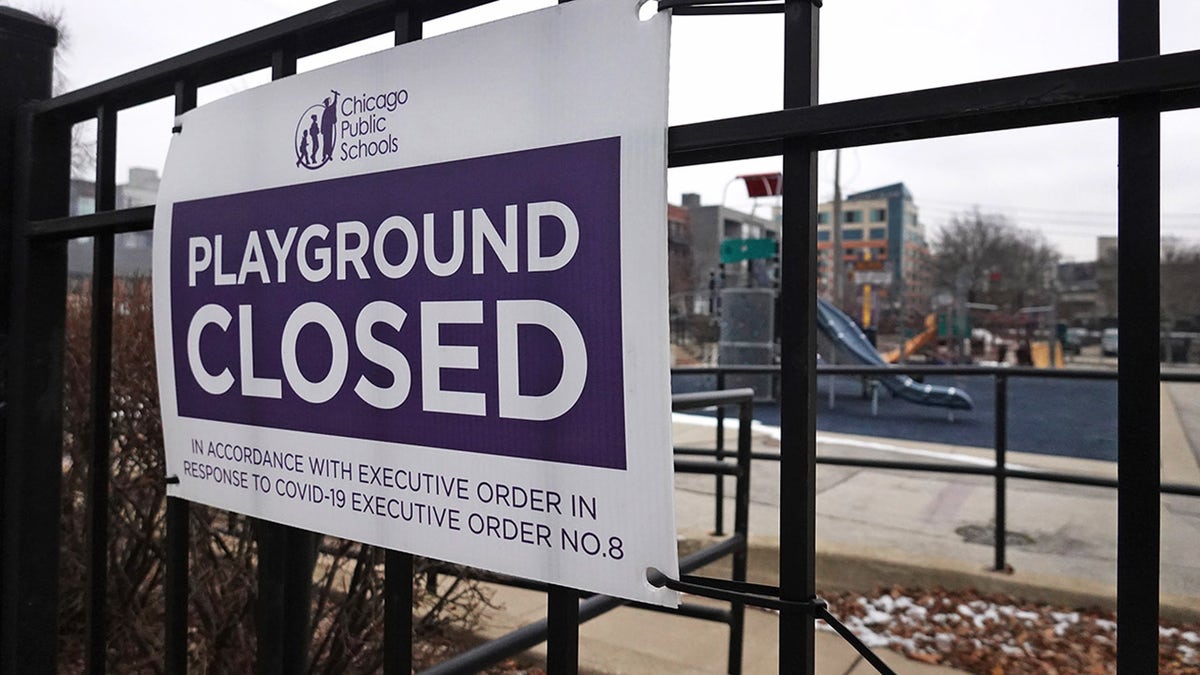
Around the country, public schools closed for in-person learning in response to the pandemic. (Scott Olson/Getty Images)
On top of that, school and government service shutdowns removed "critical support for those at high risk of committing gun crimes or being victimized," the report states. Other contributing factors noted in the report include issues with trust in law enforcement following George Floyd's murder in 2020; "de-policing," which the report describes as the "theory is that officers pulled back from enforcement actions"; increased gun sales; bail reform and progressive prosecution; and drug market disruption.
The analysis noted that more community-based violence intervention programs may have contributed to the decline in homicides the country saw in the first half of 2023.
50% homicide clearance rate in 2023
Lopez said it is getting more difficult to pinpoint the motivation behind homicides, which, in turn, may make it harder for community leaders and law enforcement to prevent homicides if they do not have a clear understanding of what is driving people to kill.

The homicide clearance rate has been dropping since 1964. Today, it sits at about 50%. (CCJ)
"It becomes harder for us to fully understand the nature of homicide and victim offender relationships and other characteristics related to homicide," Lopez said. "There's a lot of missing data with homicides … and it becomes really important to understand what's driving trends."
FBI AGENT CARJACKED IN WASHINGTON, DC: POLICE
The homicide clearance rate – about 50% today – has been steadily decreasing since the 1960s, but Lopez explained that there is no "gold standard" for what a good clearance rate would look like.

Washington Metropolitan Police officers investigate a shooting at the Potomac Avenue Metro Station in Washington, D.C., on Feb. 1, 2023. (AP Photo/Manuel Balce Ceneta)
"We also acknowledge that a 100% clearance rate is probably not a good thing because you are… going to be getting a lot of false clearances, not necessarily convictions," Lopez explained. "… Right now, we could be at an accurate clearance rate of what police can reasonably expect. Maybe it's reasonable to clear 50%."
"There is no right clearance rate."
The CCJ report concluded that crime patterns have continued to shift since the COVID-19 pandemic, and "policymakers and communities must act urgently to adapt their strategies to meet the new challenges."
NEW MEXICO'S LARGEST CITY INTRODUCES ADVANCED SURVEILLANCE NETWORK TO ADDRESS RECORD HOMICIDE RATES
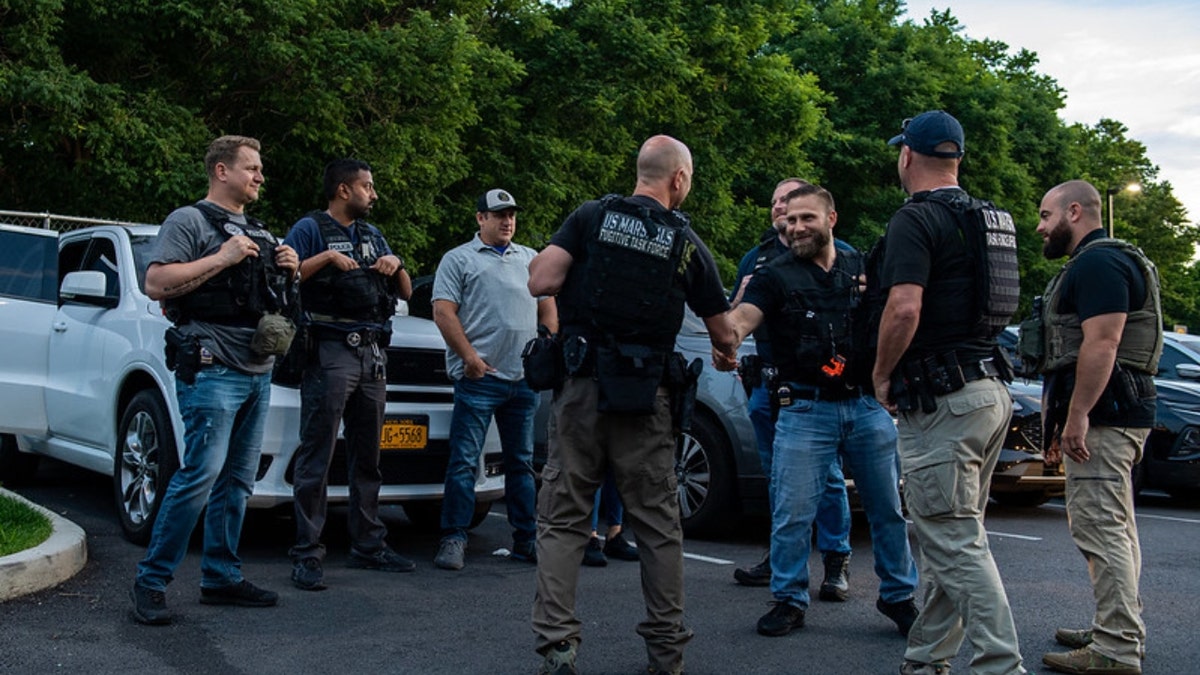
The analysis noted that more community-based violence intervention programs may have contributed to the decline in homicides the country saw in the first half of 2023. (U.S. Marshals Service, Bennie J. Davis III)
"Though the level of serious violent crime is far below historical peaks, it remains intolerably high, especially in poorer communities of color," the report states. "Research has identified strategies that work to reduce violence and improve the fairness and effectiveness of policing. Intensive efforts on both fronts are essential to help cities achieve lasting reductions in homicide and other crime."
CLICK HERE TO GET THE FOX NEWS APP
CCJ also pointed toward the Justice Department's recent "Violent Crime Reduction Roadmap," which lists 10 actions communities can take to reduce violent crime. The 10 steps include: set a clear goal; commit to saving lives by stopping violence; identify the key people and places driving violence; create a citywide plan for engaging key people and places; engage key people with empathy and accountability; address key locations by using place-based policing and investment; place responsibility for violence reduction efforts at the top; emphasize healing with trauma-informed approaches; invest in anti-violence workforce development; set aside funding for new stakeholders and strategies; and commit to continuous improvement based on data, evidence and peer-to-peer improvement.























